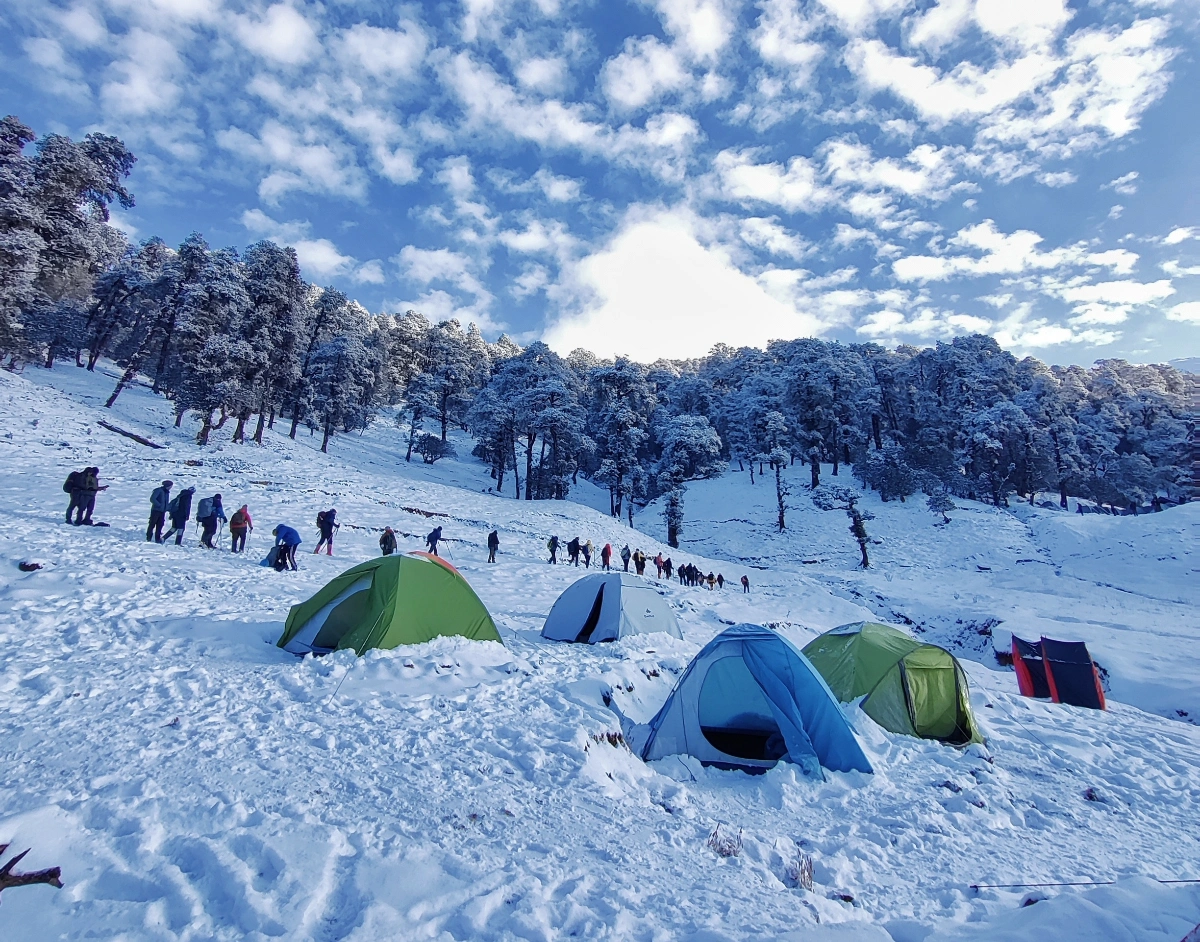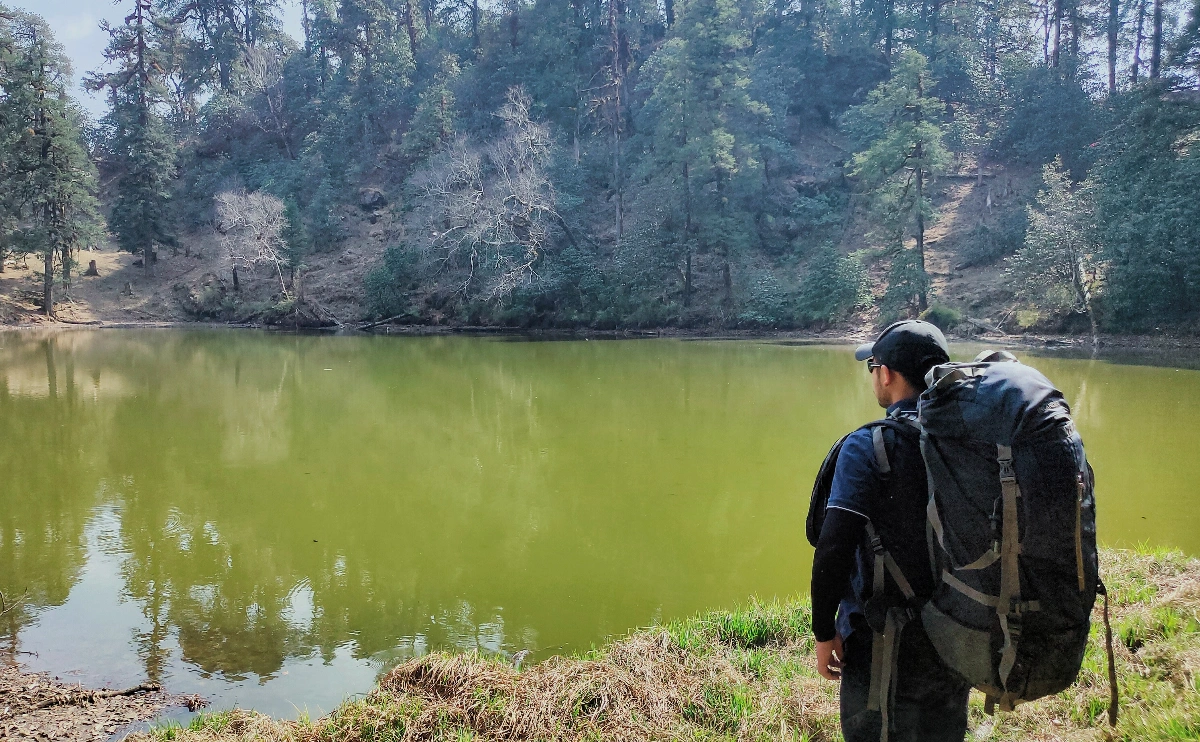The Mythical Valley of "HAR KI DUN"
6 NIGHTS/7 DAYS
3749 Meters
Moderate
57 KM
July-Nov, April- June
20
Often known as the Valley of Gods, Har ki Dun is a journey to a mystical civilization deep inside the Govind Panshu National Park. This valley lies on the outskirts of Uttarakhand state and shares a border with the Baspa Valley of Kinnaur District, Himachal Pradesh.
Har ki Dun is a quite popular attraction among most of the trekking community. The valley was known to the outside world when a Britisher named Jack Gibson, who was a teacher at Doon School, explored this place and shared his experience with other adventurers in his community. Lesser known is the fact that one of the first mountaineers to ascend the world’s highest peak, Mount Everest, Tenzing Norgay, climbed Bandarpunch in this region as part of the Jack Gibson Team. Jack Gibson was very fond of this valley; a memorable span of his life was spent here enriching the local culture and educating young people about mountaineering.
The trek presents a beautiful landscape of thousand-year-old villages, rumbling waterfalls, a proximate view of snow-capped Himalayan peaks, and a diversity of prosperous flora and fauna in the valley. We cross thousand-year-old villages like Gangad and Osla, which are still out of connection with the outer world. Osla is the last village and a key attraction for most trekkers in the valley, due to its scenic location. Every village in the Valley has a wooden temple dedicated to Lord Someshwara. Locals have a strong belief in Lord Someshwara. Many myths state that the Lord Someshwara temple is dedicated to Duryodhana, and others believe it is devoted to Lord Shiva. Some of the prominent Himalayan peaks like Black Peak, Bandarpoonch, Har ki Dun Peak, Swargarohini, and Hata Peak can be glimpsed from this trek.

Lohajung

Natraj Chowk, Rishikesh

Rishikesh

Jolly Grant Airport

(Summers-25° Max/ 10° Min) (Winters-18° Max/ -5° Min)

Lohajung: Jio/Airtel/VI Networks are available. During trek no networks are available.

Lohajung is the last point that has electricity. Note: Most of the electricity is extremely intermittent and can be absent for most part of the day during winter/late summer (when monsoon starts to set in)

Srinagar, on the way to Lohajung has last ATM Note: Most of time ATM in hilly regions are not functioning.
Day 1: Rishikesh to Lohajung (2,316 meters)
Early morning departure from the Rishikesh railway station, followed by brief stops, culminates in our arrival at Lohajung. The journey, lasting approximately 10-11 hours, features serpentine roads and a dramatic change in landscape as we ascend alongside the river Ganga, departing the hills. Notable sights include Devprayag, where the Bhagirathi and Alaknanda rivers meet. Upon reaching Lohajung, accommodations will be assigned, followed by dinner and a briefing by our trek leaders on the upcoming trek’s expectations and guidelines.
Day 2: Lohajung to Bekaltal (3,043 meters)
Lohajung, a vibrant village rich in culture, serves as our starting point after breakfast. With formal permissions from the forest department secured, we embark on our ascent to Bekaltal. The trek, taking 4 to 5 hours, passes through oak forests and steep trails leading to Telang Meadow. After a refreshing tea break in the Bugyal, we continue through a moderately dense forest, culminating at Bekaltal. The tranquil surroundings, punctuated by natural echoes and a serene sky, invite trekkers to immerse in nature. Our day concludes with a hearty dinner and an overnight stay in well-equipped camps near Bekaltal, close to the historic Vishnu temple named after Bekal Dev.
Day 3: Bekaltal to Brahmatal (3,200 meters)
Awakening to the first rays of sun illuminating Trishul and Nandaghunti peaks energizes our morning. Post-breakfast, we proceed to Brahmatal. This challenging trail, often covered in snow, elevates our trek experience as we traverse through dense clusters of Rhododendrons and open ridges offering expansive views. Noteworthy is the Lord Vishnu temple en route, adding a spiritual element to our journey. The day’s trek ends at Telandi campsite near Brahmatal, where we settle for a cozy night amidst the wilderness.
Day 4: Brahmatal Lake to Brahmatal Top and back to Lohajung
The day starts with a revitalizing cup of hot tea, prepping us for the ascent to Brahmatal Top. Depending on weather conditions and individual fitness, our trek leaders will guide us to the summit safely. The summit offers breathtaking views of Himalayan giants like Trishul, Nandaghunti, Chaukhamba, Neelkanth, Mana, and Maiktoli, alongside a panorama of the Roopkund trek route and nearby meadows. After savoring the summit views, we commence our descent to Lohajung, enriched with tales of local beliefs and mountain rituals shared by our leaders. We aim to reach Lohajung by evening.
Day 5: Lohajung to Rishikesh
We depart early from Lohajung for Rishikesh Railway Station, carrying a backpack full of memories from our Himalayan adventure. The return drive takes approximately 10-11 hours, ensuring we reach Rishikesh by late evening, marking the end of our transformative journey through the Brahmatal trek.
Basics Gears
Clothes
Accessories
Others
Mandatory Documents
Cancellation Policy
Refund Policy
The following refund shall be payable to the user in case of valid cancellation as per the guidelines
Note: The above-mentioned refunds are subjected to deductions for any expenses that may have been incurred for hotel booking or transport etc. Refunds are applicable on the total cost and not on the advance amount.Also take care of LEAVE NO TRACE policy.






How difficult is the Brahmatal trek?
The Brahmatal trek is considered a beginner friendly trek. While prior trekking experience will be helpful, it’s also manageable for fit individuals. Preparing for trek is important to enjoy the trek without getting tired frequently.
What about accommodations during the trek?
We follow an Itinerary of 4 Nights/5 Days. For the Day 1 and Day 4 trekkers will stay at our homestay in Lohajung. During the trek the accommodations are in tents. Sleeping bags will be provided by us.
What kind of toilet facilities can I expect during the trek?
At Lohajung, the guest house provides concrete toilets for your convenience.
During the trek, toilet tents will be set up at each campsite. Depending on the group size, there will be 2 to 4 toilet tents. Each toilet tent contains a pit for use, along with a mound of soil and a shovel to cover the waste. These are dry toilets, and you will need to use plain toilet paper. Avoid using wet wipes as they are not biodegradable.
What kind of meals is served during the trek ?
During the trek, we provide homemade food that is healthy and freshly prepared. The meals include chapati, rice, vegetables, Sweets, and dal, ensuring you receive nourishing and comforting food throughout the journey.
Which is best time to visit Brahmatal trek ?
The best months for the Brahmatal trek are December to March if you want to experience snow-covered trails and stunning winter landscapes. For clear mountain views and pleasant weather, April to June and September to November is also a great time. Each season offers a unique experience, with winter showcasing snow and autumn providing clear skies and vibrant scenery.
Will I get mobile network and charging facilities during the Brahmatal trek?
You will receive mobile signals at Lohajung for most networks, but the connection will be intermittent as you move further into the mountains. It is best to complete important calls at Lohajung and inform your family about limited connectivity during the trek.
The last charging point is at the basecamp in Lohajung, but power cuts are possible. It is advisable to carry a power bank to keep your devices charged.
Is there any age limit for brahmatal trek ?
The Brahmatal trek is suitable for individuals aged 8 years and above. However, participants should be physically fit and prepared for moderate trekking conditions. Children and older adults should consult a doctor before joining the trek to ensure they are fit for high-altitude activities.
I have extra luggage with me. Is there any cloakroom service available?
Yes, since you will start and return to the guest house at Lohajung, you can leave your extra luggage there if needed. However, avoid leaving any valuables, as Mountainiax is not responsible for any loss or damage to your belongings.


Our goal is to encourage sustainable tourism in offbeat destinations of the Himalayas. We want more people to get out of the main trekking hubs & experience themselves and the planet on a new more meaningful level.
All Content & Photos Copyrighted by Mountainiax © 2025